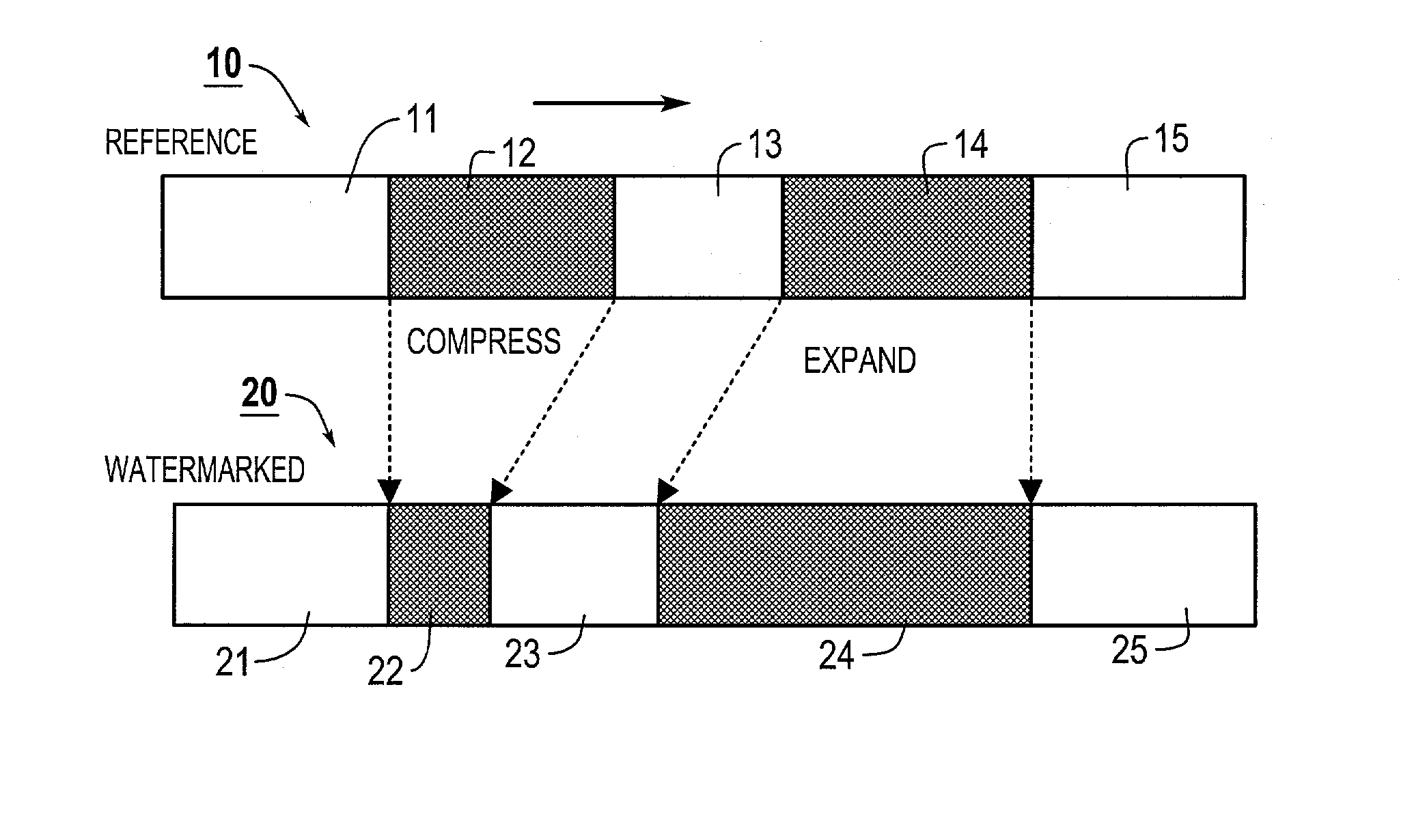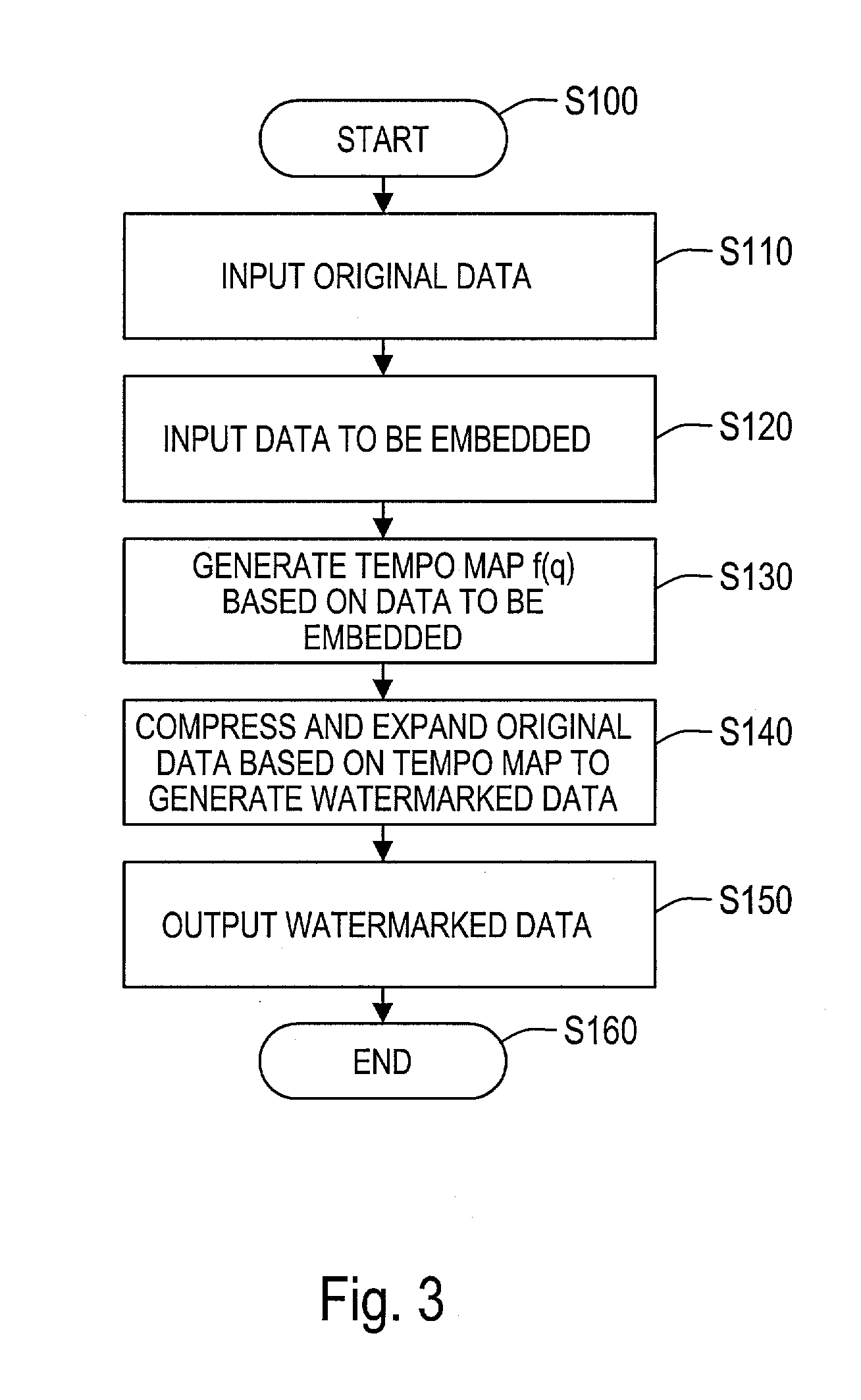Systems and methods for embedding data by dimensional compression and expansion
- Summary
- Abstract
- Description
- Claims
- Application Information
AI Technical Summary
Problems solved by technology
Method used
Image
Examples
Embodiment Construction
[0048] The various exemplary embodiments of the systems and methods according to this invention employ a watermarking technique that selectively dimensionally compress or dimensionally expand, by an imperceivable amount, portions of a data file extending along a given dimension to embed data into that data file. In various exemplary embodiments, the underlying time-base of an audio signal or a spatial offset of an image is dimensionally compressed or dimensionally expanded by an imperceivable amount.
[0049] The systems and methods according to this invention are directed to embedded and extracting watermarks and other digital data from watermarked audio files and / or watermarked images using "time-based, or, analogously, "spatially-based", embedding and extracting techniques. It should be appreciated that, as discussed herein, these time-based techniques and these spatially-based techniques according to this invention are alternative ways of expressing the same central conception, i.e...
PUM
 Login to View More
Login to View More Abstract
Description
Claims
Application Information
 Login to View More
Login to View More - R&D
- Intellectual Property
- Life Sciences
- Materials
- Tech Scout
- Unparalleled Data Quality
- Higher Quality Content
- 60% Fewer Hallucinations
Browse by: Latest US Patents, China's latest patents, Technical Efficacy Thesaurus, Application Domain, Technology Topic, Popular Technical Reports.
© 2025 PatSnap. All rights reserved.Legal|Privacy policy|Modern Slavery Act Transparency Statement|Sitemap|About US| Contact US: help@patsnap.com



